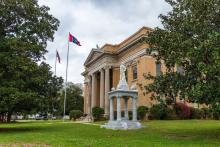Electric Coops in North East Mississippi Using RDOF Funds to Expand Broadband
North East Mississippi Electric Power Association (NEMEPA) cooperatives celebrate another year of funding and progress toward building better broadband across nine service areas.
At a recent event, Northern District Public Service Commissioner Brandon Presley said: "We are going to be one of the most connected states in the United States of America in some of the most rural areas of America. It has been amazing to watch. This has been not just a top priority for me but also our co-ops."
Collectively, the NEMEPA cooperatives already offer broadband to over 84,000 members and expect to expand to over 182,000 members once the work is complete.
Nine NorthEast Power Cooperatives Bringing Fiber to Rural Residents
The NEMEPA expansion took off when the cooperatives were awarded (Rural Digital Opportunity Fund) RDOF grants to extend existing fiber networks or build new ones for their members.
Each district received a share:











